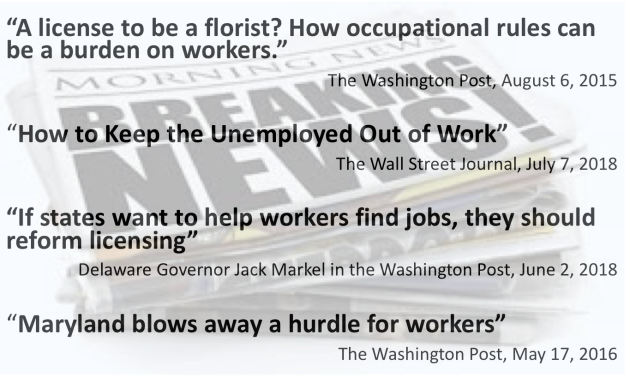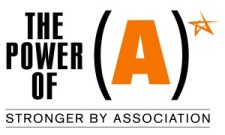A Tale of Two Paradigms
9 August 2018 1 Comment
Paradigms are the frames of reference that filter our view of the world. They govern how we see things … and can blind you to realties that don’t fit your governing paradigm.
Take professional licensure. It’s a no-brainer, right? Some form of professional licensure has existed in America for lawyers since 1763, for physicians and dentists since the mid-1800s and for engineers since 1907. After all, if people are going to entrust their safety, liberty, property, health and general welfare to you, they have a right to expect you to be competent and ethical.
In fact, though licensure came (comparatively) late to engineering, I would argue licensure is needed for engineering, most of all. If you need a doctor or a dentist, you can look into his or her credentials before submitting to care; if you need a lawyer, you can look into his or her credentials before entrusting them with your case.
 But when you send your child to school, who checked to ensure that the engineering of the utility services was done correctly? In 1937, an explosion at a school in New London, Texas, killed 300 people and severely injured another 300, many of them children. (Some estimates place the casualties as high as 1,000.) The cause of the explosion? Faulty engineering linked to cost saving actions taken by the school board. This tragedy was one of the motivating forces behind passage of Texas’ licensure law that same year.
But when you send your child to school, who checked to ensure that the engineering of the utility services was done correctly? In 1937, an explosion at a school in New London, Texas, killed 300 people and severely injured another 300, many of them children. (Some estimates place the casualties as high as 1,000.) The cause of the explosion? Faulty engineering linked to cost saving actions taken by the school board. This tragedy was one of the motivating forces behind passage of Texas’ licensure law that same year.
When you drive on a road, enter an elevator, or cross a bridge, what assurance do you have that it was engineered competently? Licensing the professional practice of engineering is necessary because P.E.s have the knowledge to recognize risks that the public itself is not able to identify and not empowered to protect itself against.
The form of government established in the US Constitution reserves authority to license professions to the states. And there are currently laws in each of the 50 United States (and its territories) that establish legally recognized standards of practice based on an engineer’s education, experience,examination, and (in most states) mandatory continuing education. Regulators, the profession, educators and examiners have worked cooperatively to establish a system intent on maximizing the uniformity of engineering standards and license mobility across the United States. Areas of professional practice reserved to licensed professional engineers are reasonably and narrowly defined and limited to those areas with implications for the public welfare.
Now, some may (and some have) argued that engineering licensure was vital in the bad old days, but that society, technology and education have evolved to such an extent that it is less important today.
History provides a steady stream of examples that prove such a thesis wrong. Take the 1986 space shuttle Challenger explosion, where engineering judgment was over-ruled by non-engineers. Or the 2010 Deepwater Horizon explosion and oil spill, where, under industrial exemption, P.E.s were not required but their involvement might have avoided the catastrophe. Or the 2015 Gold King Mine disaster, where authorities simply failed to employ a P.E. where it was clearly required and three million gallons of mine waste water and tailings were released into the Animas River.
There are too many more such examples that could be cited. Additional new ones can be expected in the future.
Moreover, there are still other areas where the value to the public that a P.E. could bring goes unrecognized: areas like autonomous vehicles, cybersecurity, even such mundane areas as amusement park rides and duck boat tours. Real world experience has proven how deadly the lack of competent engineering judgment in these fields can be. Their actual and potential vulnerabilities have all been covered in recent issues of PE magazine.
Surely the need for engineering licensure is self-evident, right?
But there is another, a different paradigm at work here. Viewed from this perspective, licensure exists to protect licensees from competition, not the public from harm. Licensure is a barrier to economic growth, workforce development and investment. Ergo, alllicensure requirements should be challenged and removed.
It is a paradigm being aggressively pushed by well-funded and nationally-coordinated efforts of groups like the American Legislative Exchange Council (ALEC), the Koch brother’s Americans for Prosperity, the Institute for Justice, the Goldwater Institute, and others.
It is a paradigm that is gaining public currency, as can be seen in headlines, op-eds and media coverage from the Wall Street Journaland the Washington Post right down to your hometown newspaper.

And it is a paradigm that drove serious anti-licensure initiatives in legislatures in 31 states in just the past three years … and in 16 states so far in 2018 alone.

Sometimes the P.E. is unintended, collateral damage in overly broad, occupational licensing and deregulatory efforts; increasingly, though, the bullseye is centered right on the P.E. itself.
The engineering community cannot afford to rest complacently in the comfort of its own paradigm. It cannot afford to deal with specific threats where they occur, and pat itself on the back when, as has luckily been the case so far, the specific threat is neutralized or mitigated.
We need to recognize that no single battle victory is ever final, that a bad outcome in any state is a danger in every state, and that rigid, knee-jerk defense of the status quo is insufficient. (Unfortunately, anti-licensure forces can cite examples of actual – albeit, trivial – over-reach by P.E. regulation and regulators that defy common sense.)
The now prevailing paradigm is against us. Unified, nation-wide action is required, action open to fundamental change to strengthen and improve the P.E. so that it can stand in the face of the new paradigm.
And that action must be sufficient to change the public’s perception from the license as a purely legal or regulatory obligation and bureaucratic nuisance to recognition of the value and need to use P.E.s even where the law (and industrial exemptions) don’t require it.
That is precisely the mission that NSPE (as an integrated network of national and state organizations) exists to serve.





Mark, I really like this blog post. You make a great case about how and why professional licensure for various professions, especially including engineering, can be helpful to societal growth.